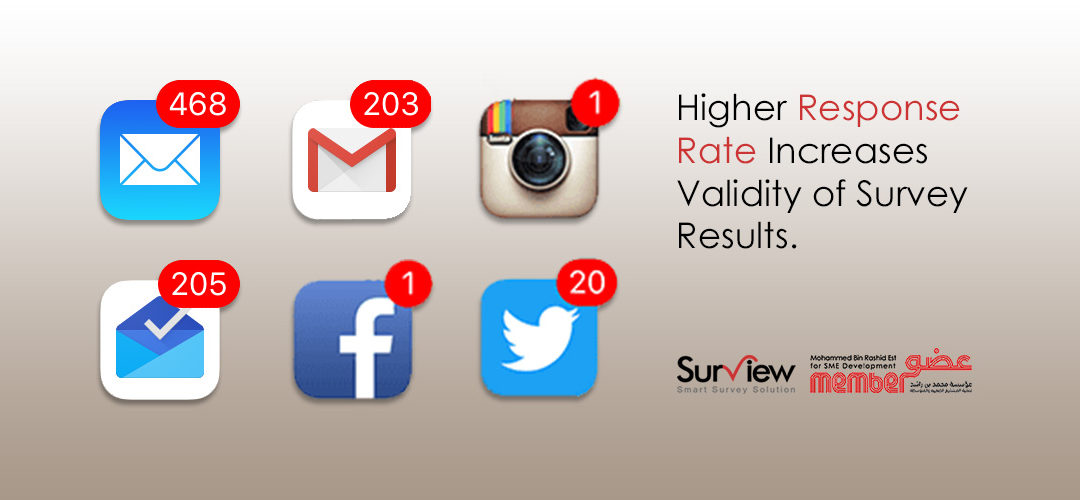What is Survey Response Rate?
The percentage of people who respond to a survey is called the response rate, this rate is important, and shouldn’t be ignored. High survey response rates help to ensure that survey results are representative of the target population. A survey must have a good response rate in order to produce accurate, useful results. You can obtain the survey response rate by dividing the number of people who submitted a completed survey (80% or more of questions answered) by the number of people you attempted to contact. For example, if you asked 100 participants to complete the survey and 70 responded, the response rate is 70/100 or 70%.
Survey response rates vary widely. There are a variety of factors which can impact survey response rates. By closely observing these factors, you can take steps to improve your response rates. Higher response rate gives more statistically relevant data and better return-on-investment on your survey project.
It is preferable to get a high response rate (80% or higher) from a small, random sample rather than a low response rate from a larger group of potential respondents. But, even this general guideline breaks down when we look at the differences between survey audiences.
Internal surveys (i.e. to employees) generally have a much higher response rate than those distributed to external audiences (i.e. customers). Internal surveys generally receive a 30-40% response rate (or more) on average, compared to an average 10-15% response rate for external surveys.
External surveys, even to well-segmented groups of customers, won’t often, be able to reach just the right type of respondents. And no matter what incentive you choose it won’t appeal to everyone who receives your survey.
Response rates can soar past 85% (about 43 responses for every 50 invitations sent) when the respondent population is motivated and the survey is well-executed. Response rates can also fall below 2% (about 1 response for every 50 invitations sent) when the respondent population is less-targeted, when contact information is unreliable, or where there is less incentive or little motivation to respond.
Factors that Effect Survey Response Rate
Many factors affect the response rates. It can be the mode of distribution (email vs. in person) or, the incentive provided (chance to win a gift vs. right to view results). Some of the most common things that impact response rates include:
- Customer Loyalty: When respondents feel a connection to the brand conducting the survey, they participate more willingly. A high level of loyalty will lead to a higher number of responses.
- Brand Recognition: When a survey is distributed by a well-known brand it gets more responses than one coming from an unknown source.
- Perceived Benefit: When the survey completion is attached to some benefit, respondents participate more eagerly. Benefits can be, getting early access to results or being entered into a raffle.
- Demographics: Some sections of the population are simply more likely to response to survey invitations than others.
- Survey Distribution: If your audience consists mostly of digital natives, sending out links via social media will net you some good response rates. If you’re surveying retirees, you may want to choose an alternative distribution method.
Response rate and feedback may increase when respondents believe that participating in a survey will result in real improvements; their opinion will be heard and that action will be taken based on their feedback.

